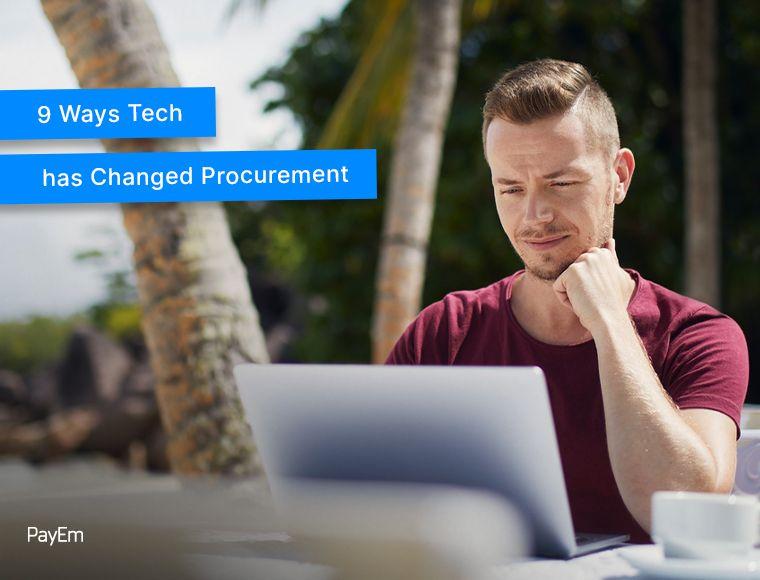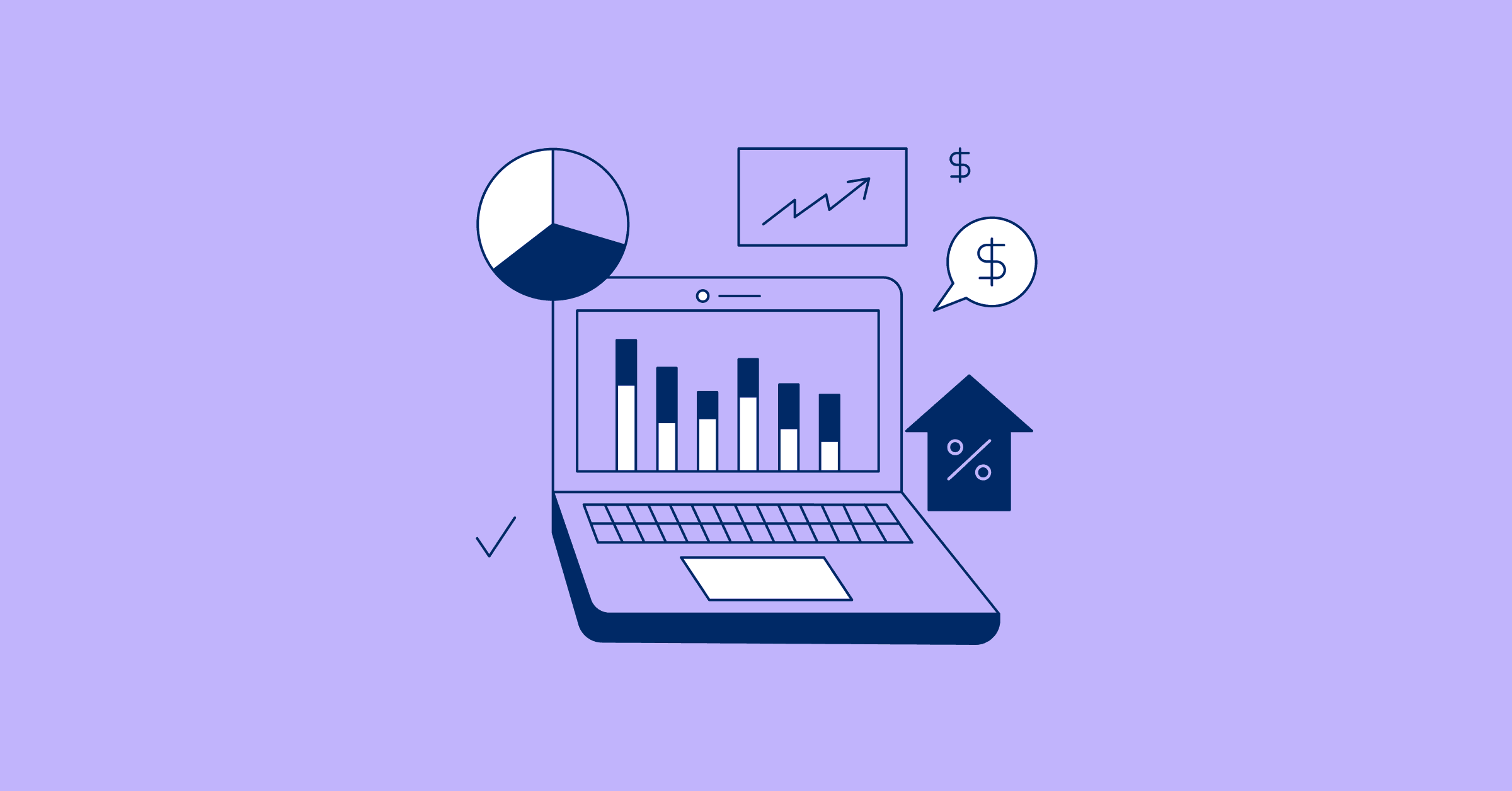November 03, 2022
9 Ways Tech Has Changed Procurement

Sign up for our newsletter
Stay informed with the latest trends and best practices in finance and procurement.

Technology is no longer optional in procurement, but rather a necessity. As businesses continue to grow and evolve, their needs become more complex. Manual processes are simply inefficient at managing the multifaceted nature of the procurement process. Thankfully, along with the need for procurement enhancements, technological solutions have emerged to provide businesses with the support they need for success in the procurement process.
This article will cover nine ways that technology has altered procurement:
- Data Collection
- Improved Operational Performance
- Process Automation
- Reduction of Errors
- Deeper Analytics
- Mobility
- E-procurement
- Risk Management
- Cloud-Based Software
Data Collection
Technology facilitates data collection in the procurement cycle by providing key metrics businesses need. It's undeniable that technology offers greater insight into a business' data gleaned from reports available with AI-enabled procurement software. Companies in all industries need to make critical decisions at every procurement phase, like whether or not to continue with a vendor based on product sales. Metrics provide stakeholders with the raw data to determine the next best steps that will ensure continued profitability.
In addition to allowing a business to make critical decisions about current and daily operations, data provides greater insight into how decisions made today will affect the organization's future. This transparency is what stakeholders need to gain greater insight into the procurement process, thus allowing them to make the right decisions for the future of the business.
Improved Operational Performance
The operational performance of a company relates directly to having the most efficient and supportive systems and processes in place. One of the ways that technology has altered the procurement space is by boosting operational performance and maximizing efficiency. With many different parts in the procurement process, manual systems can be time-consuming and divert resources from critical tasks that aid productivity.
Process Automation
Reading through many different PO requests and then emailing them to the right manager, whether it be the controller or VP of Finance, to get approval is just one of the manual steps in the procurement process. Organizations take many other steps to complete the procurement cycle, such as approving invoices, compiling and recording data on payments, and much more. However, these processes are labor-intensive and leave a large margin for error. Using technology to assist in the procurement cycle facilitates process automation. This tech solution leads to faster, more efficient, error-free, and ultimately, more effective processes.
Reducing Errors
One of the primary ways that technology has altered the procurement scene is by reducing errors in the procurement cycle. Procurement trends strongly lean towards cloud-based procurement software, which offers more accurate data and more efficient systems. With the implementation of technological procurement solutions, a business can better reduce errors and mitigate risks inherent to a manual procurement system.
Deeper Analytics
To be successful in mastering the procurement life cycle, a business must go much deeper than surface data. As a result, companies embrace deeper analytics to gain more in-depth knowledge and understanding of critical components and factors that influence productivity. Technology-driven procurement provides access to the deeper key metrics that drive decision-making at a vital level. Without this more in-depth insight from automated procurement solutions, a business won't have the information needed to move forward effectively.
Critical data will serve to provide transparency and will help to support data-led decision-making. The best way to leverage deeper analytics in procurement is by incorporating analytics into the decision-making process rather than viewing it as optional.
Mobility
Key personnel that make critical decisions on behalf of a company are not always available at the same time or in the same location. That is why having the ability to collaborate, share data, and make decisions for their company's procurement cycle on their own time is so critical. The procure-to-pay trend that supports this need is mobility in the P2P scene. Mobile phones allow users to be anywhere at any time while syncing into the same platform. This allows a business to function more efficiently while leveraging technology to get more done regardless of where stakeholders are located.
When developing a procurement strategy, an organization will benefit from considering mobility as a critical feature when choosing a cloud platform. Mobile services can help to streamline the procurement process while offering an adaptive, flexible, and collaborative user experience.
E-Procurement
E-procurement provides a business with the ability to divert the focus of its operations to the digital space. This equates to a reduced paper trail and a reduction in the margin for error. With the adoption of e-procurement into the procurement cycle, a company can more effectively complete the full range of procurement functions from one digital platform. E-procurement has significantly impacted the procurement system by allowing businesses to focus their staff's abilities and talents on mission-critical tasks. Repetitive or redundant tasks can be eliminated, and time can be better spent on more value-driven tasks.
Risk Management
Mitigating risk with technology-focused procurement solutions is one of the top procurement trends for businesses today. With focus shifting from the price, companies are starting to focus on business continuity and risk mitigation as more primary and long-lasting areas of concentration when selecting a supplier. In addition to mitigating risk in supplier selection, it is also helpful to consider how risk mitigation applies to the overall procurement process related to the exchange of funds for goods and services. The ability to track exactly where the money is going and see data in real-time provides businesses with the security they need.
Cloud-based Software
A robust and fully featured cloud-based procurement software offers the support and structure businesses can rely on for a successful procurement process. Inherent within cloud-based procurement software is a wide variety of features that can help businesses stay on track and maintain a smooth workflow for enhanced profitability. Features that support enhanced collaboration, budget tracking, and mobility are the premier hallmarks of dynamic and powerful cloud-based software options.
Conclusion
As businesses search for more optimal ways to streamline the procurement process, new procurement trends arise. One such procure-to-pay trend that has risen to meet the challenges of manual procurement is that of cloud-based software.
A fully-featured cloud-based software known as PayEm has emerged to transform the way businesses do business in the procurement arena. The platform provides the top-tier solutions any organization needs to succeed at every stage of the procurement process. From request to reconciliation (R2R), companies trust PayEm to support fluid and seamless procurement cycles.
The features businesses rely on PayEm to provide include:
- Streamlined payments in alignment with PO budget
- Real-time data spend for help staying on track
- Customized approval flow for every type of purchase
- Automated processes and approval flows
- In-platform communication for enhanced collaboration among employees
As an industry-leading cloud-based software, there isn't any aspect of the procurement cycle that PayEm can't manage effectively. The PayEm platform easily supports custom approval workflows, receipt collection, data analytics, multiple payment methods, and more. With a seamless, unmatched request-to-reconciliation system, you can feel confident knowing that your procurement system is fully supported. Contact PayEm's experts to book a commitment-free, no-cost demo of the platform today.


